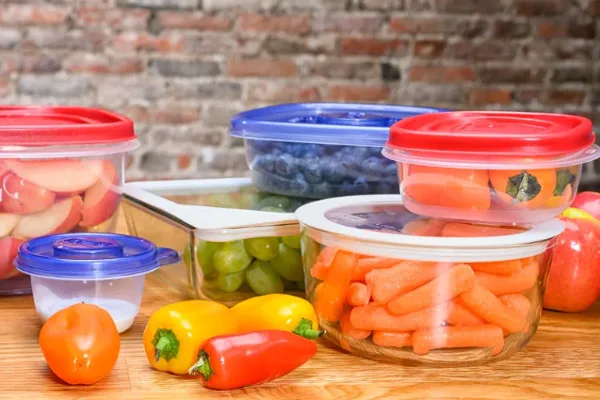Plastic injection molding plays a crucial role in the manufacturing of household products due to its efficiency, versatility and ability to produce high-quality, durable items on a large scale. The manufacturing process involves injecting molten plastic into precision-engineered molds to create a wide range of household items, from containers and kitchenware to furniture components and cleaning tools.
The Advantages of Injection Molding in household Product Manufacturing
Unbeatable Cost-Effectiveness at Scale
Low Cost Per Part: While the initial investment in mold (tool) design and manufacturing is high, the cost to produce each individual part after that is extremely low. For household items that are sold by the millions this economies-of-scale model is essential.
Material Efficiency: The process is highly controlled, injecting a precise amount of material into a mold, which minimizes waste. Any excess plastic (sprues and runners) can often be reground and recycled back into the process.
High Production Speed and Efficiency
Mass Production: Modern injection molding machines can produce shockingly high quantities of parts in a short time. A cycle (inject, cool, eject) can take as little as 15-30 seconds for a typical household item. This allowed manufacturers to meet massive global demand.
Automation: The process is highly automatable. Once the mold is in the machine and parameters are set, it can run with minimal human intervention for 24 hours a day, ensuring consistent output and lower labor costs.
Exceptional Design Flexibility and Complexity
Intricate Details: It can produce complex geometries, intricate textures, and fine details directly into the part. Integrated Components: Multiple parts can be consolidated into a single molded piece (a principle called “part consolidation”), reducing assembly time and cost. For example, the living hinge on a pill bottle or the snap-fit clips on a remote control are molded as one piece.
Superior Strength and Durability
Structural Integrity: Parts can be designed with reinforcing ribs, gussets, and coring, making them very strong and rigid without being solid and heavy.
Impact Resistance: Many engineering-grade plastics used in molding (like ABS, Polycarbonate, and certain nylons) offer excellent impact strength, perfect for items like toolboxes, children’s toys, or appliance housings that might be dropped.
Consistent and High-Quality Reproducibility
Precision and Repetition: Once the mold is perfected, every single part that comes out of it is virtually identical. This ensures consistent quality, fit, and functionality.
Excellent Surface Finish: Parts come out of the mold with a finished, ready-to-use surface. This can range from a high-gloss polish (like on a shower caddy) to a soft-touch matte finish or a custom grain (like the texture on a power drill housing).
Vast Material Versatility
Manufacturers can choose from a huge range of thermoplastic materials, each with properties tailored to the product’s need.
Application-Specific Materials:
- PP & PE: For flexible, chemical-resistant containers.
- ABS: For rigid, glossy, and impact-resistant items.
- Polycarbonate: For crystal-clear, “unbreakable” items.
- TPE/TPU: For soft-touch, grippy surfaces.
- Color Integration: Color pigments are mixed with the raw plastic pellets, meaning the color is built-in and won’t chip, peel, or fade like paint.

Plastic food storage containers
Enhanced Functionality Through Advanced Techniques
Injection molding is not just a single process; It can be combined with other techniques to create superior products.
Overmolding/Two-Shot Molding: This allows a soft, ergonomic material (like TPE) to be molded directly over a rigid substrate (like ABS).
Insert Molding: Metal or other components can be placed into the mold and plastic injected around them. This is common in power tools, where metal threads are embedded in plastic housing for strength.
Plastic injection molding in household applications
- Laundry Basket: Lightweight yet strong (ribs for strength), often with a textured finish (good surface finish), produced for pennies (cost-effective).
- Electric Kettle Body: Heat-resistant material, glossy aesthetic, complex shape housing the internal components (design flexibility), and consistent for mass production.
- Children’s Toy Building Blocks: Intricate detail for interlocking, high impact resistance, consistent dimensions for perfect fit, and produced in vast quantities.
- Toothbrush: Overmolded soft grip for comfort, complex bristle patterns, and produced for an extremely low cost.
- Food Storage Containers: Often made from PP, they utilize living hinges and snap-fit lids created through part consolidation, are dishwasher safe, and are produced with material efficiency.
- Appliance Housing: For items such as vacuum cleaners and blenders, housing is typically ABS or PP, offering shock resistance, excellent finish, and the ability to integrate mounting points and vents directly into a single molded piece.
Conclusion
Plastic injection molding combines precision, efficiency and versatility, making it the preferred manufacturing method for the production of a wide range of safe, durable and attractive kitchenware items on a large scale.
